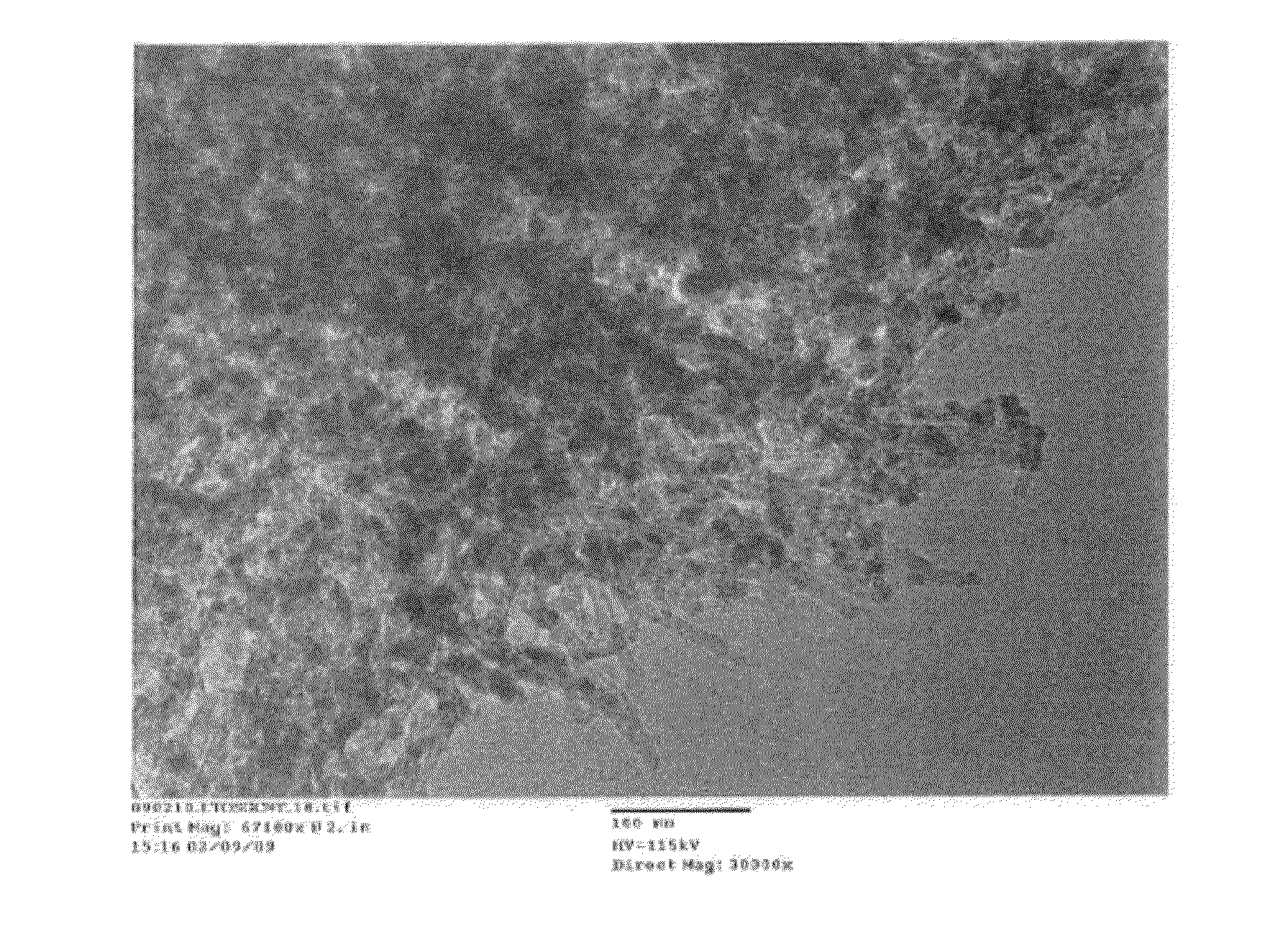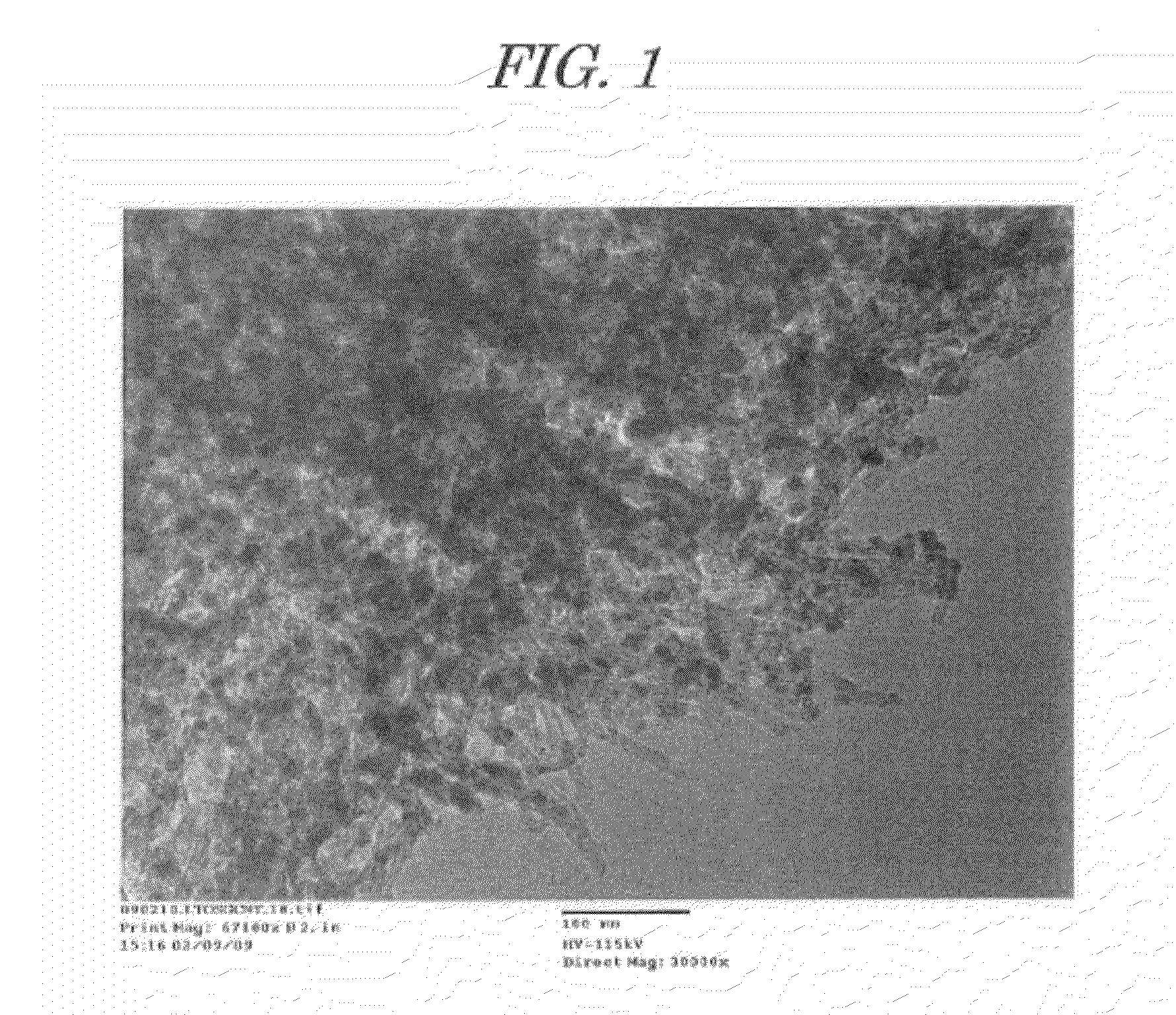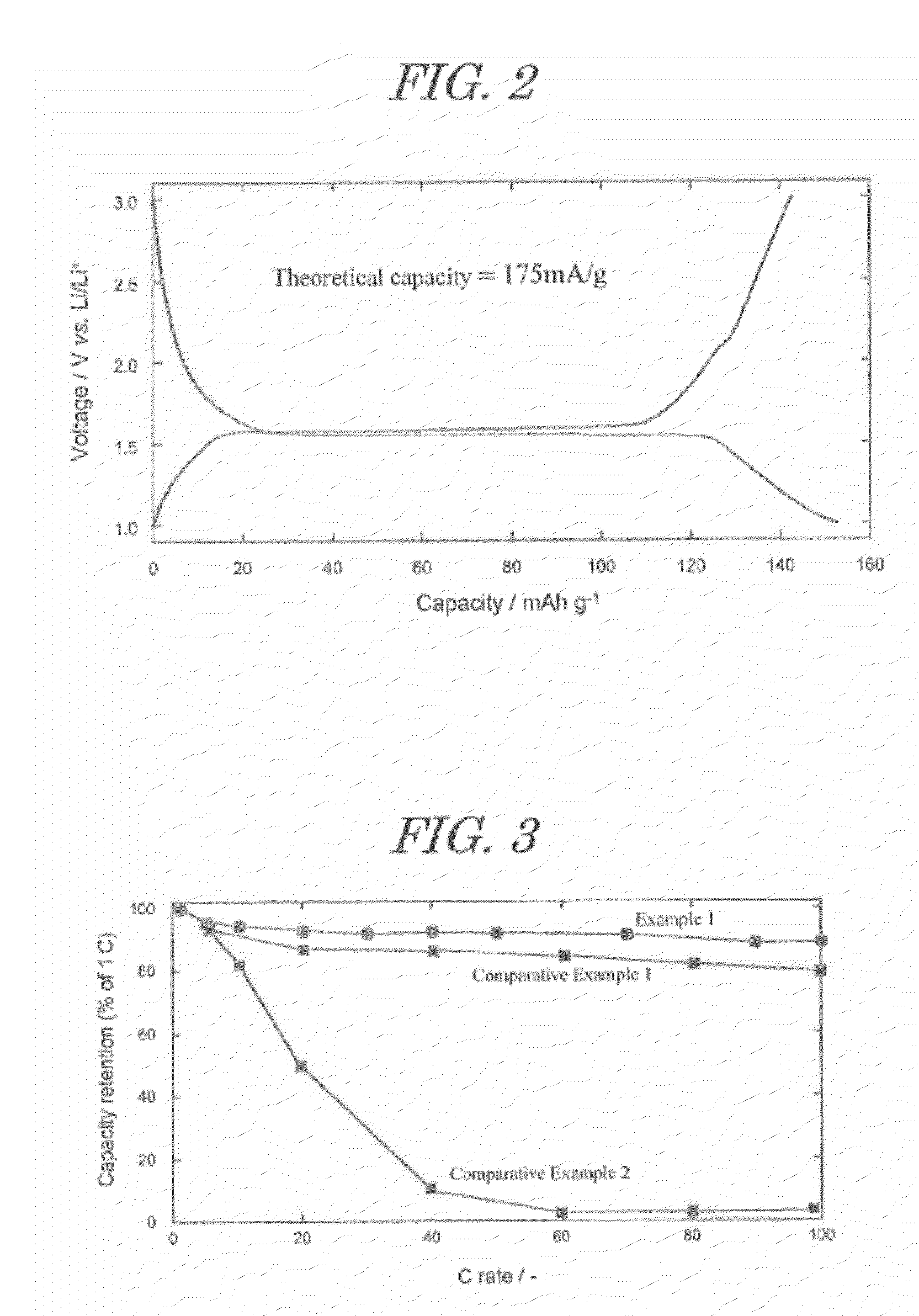Electrode material and electrode containing the electrode material
a technology of electrode material and electrode material, which is applied in the direction of alkali titanates, non-metal conductors, cell components, etc., can solve the problems of difficult to obtain high dispersibility, and achieve the effects of reducing the content of carbon materials, high output characteristics, and high capacity characteristics
- Summary
- Abstract
- Description
- Claims
- Application Information
AI Technical Summary
Benefits of technology
Problems solved by technology
Method used
Image
Examples
example 1
[0028]A mixed solvent was prepared by dissolving acetic acid and lithium acetate in a mixture of isopropanol and water such that there would be 1.8 mol of acetic acid and 1 mol of lithium acetate per 1 mol of titanium alkoxide. This mixed solvent was placed into the rotary reaction vessel together with the titanium alkoxide, isopropyl alcohol, and SGCNT. The inner cylinder was rotated for 5 minutes at a centrifugal force of 66,000 N (kg·m / s−2). As a result, a thin film of the reactants is formed on the inner wall of the outer cylinder, and the reaction was accelerated by applying shear force and centrifugal force to the reactants. By this way, SGCNT that carried a highly dispersed lithium titanate precursor was obtained.
[0029]Thus obtained SGCTN carrying the highly dispersed lithium titanate precursor was dried under vacuum at 80° C. for 17 hours so that a composite powder comprising the highly dispersed lithium titanate precursor carried on the SGCNT can be obtained.
[0030]Thus obta...
PUM
 Login to View More
Login to View More Abstract
Description
Claims
Application Information
 Login to View More
Login to View More - R&D
- Intellectual Property
- Life Sciences
- Materials
- Tech Scout
- Unparalleled Data Quality
- Higher Quality Content
- 60% Fewer Hallucinations
Browse by: Latest US Patents, China's latest patents, Technical Efficacy Thesaurus, Application Domain, Technology Topic, Popular Technical Reports.
© 2025 PatSnap. All rights reserved.Legal|Privacy policy|Modern Slavery Act Transparency Statement|Sitemap|About US| Contact US: help@patsnap.com



